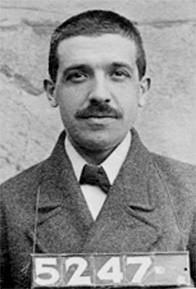CPF MediSave EduSave are ALL Grand Ponzi Schemes of PAP
It is OPENLY accused that US's Medicure etc are the BIGGEST Grand Ponzi Schemes. Chinese called these 吸金大法。
PAP's CPF MediSave EduSave etc etc are JUST THE SAME. They sucked up you money in COMPULSORY Manner worst than all the rest, and had been protected by so called Laws. They squandered your money, and only depending solely on new members of CPF to contribute further so that they can pay out some to the old members. There is a great deficit what the PAP had lost heavily, and there is very little new members, and Singaporean population aged and declined. The CPF Ponzi is GOING BUST. The PAP's plan to had foreigner to come here to make population 6.5 million hoping to TOP-UP their CPF Ponzi is failing, because foreigners closed their CPF A/C and left Singapore.
There is no money left, even before Singaporeans get old. PAP want us to die in Johore & Batam. The CPF account balance statement is just a piece of worthless shit. Money is long gone thanks to PAP Ponzi Crooks.
Chinese national news agency 新华网 http://www.news.cn had expressed it's view:
http://news.xinhuanet.com/world/2009-05/23/content_11421715.htm
您的位置:新华网主页 - 新华国际
美国医疗保险:最大的旁氏骗局?
2009年05月23日 07:19:30 来源:新华网
【字号 大 中 小】 【留言】 【打印】 【关闭】
【Email推荐: 】
美国的医疗保险体系被称为“这个国家所做的最好的事情之一”。然而,随着金融危机的深化,它的缺陷日益显现。专家说,现行医疗保险体系是对年轻一代的掠夺,终有一天将不堪负荷,分崩离析。从这个意义上讲,它好比世界最大的旁氏骗局。
老人:看病是一种社交
在美国弗洛里达州棕榈滩的拉波萨达退休社区,人们过着令人羡慕的生活。那里有大理石铺成的地面,清澈的游泳池,美味的食堂,还有风景如画的湖边公寓。拉波萨达退休社区因此被福布斯评为美国十大“富丽宫”退休社区之一。
居民乔·特纳说:“我们在这里的生活比蜜甜。”
那么,入住这一社区要多少钱呢?
“约35万到50万美元之间,”另一居民山姆·巴思说。
这还只是入住的初始费用。来这里居住的老人都是成功人士,收入颇丰。除此之外,他们还享受优厚的医疗保险,绝大多数医疗费用都由纳税人替他们支付。
“医疗保险,我认为它是最美妙的东西,”居民玛丽莲·赫伦说。
另一位居民亨利·贝克同意这一说法,他说医疗保险是“这个国家所做的最好的事情之一”。
他们当然热爱医疗保险,谁不希望得到免费服务?正因为医疗保险的存在,他们看病几乎全部免费,即使有少许开支,也十分便宜,因此,他们中有些人三天两头跑医院。
“那是我们的社交生活,”赫伦开玩笑道。
年轻人:这是对我们的盗窃
但哈佛大学商学院教授雷吉娜·赫茨林格认为,医疗保险欺诈了年轻人。“我们给年轻人留下了怎样的遗产?”她说,“我们实际上是在盗窃,这是不对的。”
美国广播公司“20/20”节目组采访了俄亥俄州代顿3名高中生。他们非常热衷于帮助老人,是食物派发中心的志愿者,但他们都对医疗保险体系颇有微词,认为这一体系强迫他们为富有老人支付医疗费用。
学生帕蒂·阿诺德说:“他们住着30万到50万的豪宅,却不用自己支付医疗费用,他们在道义上是怎么想的?”
另一名学生扎克·加达维说:“医疗体系实际上是对我们这一代的抢劫。”
美国企业研究所政策制定专家安德鲁·比格斯认为,学生的抱怨不无道理。他说:“政府对老人和孩子的花费比例是6:1,而实际上,孩子中的贫穷率远远高于老人的贫穷率。”
正如学生内森·康斯特布尔所言,这就好比“从需要帮助的人手中夺取钱财帮助那些不需要帮助的人”。
对于年轻人的抱怨,拉波萨达社区的居民作何反应?大多数老人认为,这么多年来,他们每月的工资收入都要被扣除一笔钱用于养老,现在享有的一切,他们早就预付了。
居民亨利·珀尔说:“我为它支付了40年。我们现在的生活是应得的。”
危机:酝酿财政海啸
的确,老人为医疗保险支付多年,但如今的医疗保险受益人所得到的是他们当初付出的两到三倍。
已退休的亿万富翁皮特·彼得森说,医疗保险体系“不仅不公平,而且是彻头彻尾的不道德”。
彼得森认为,医疗保险体系不仅关乎公平,也关乎支付能力。他名下的慈善基金会警告说,如不采取措施推动政府财政改革,医疗保险体系行将倒闭。
“医疗保险体系正在酝酿一场财政海啸,”彼得森说。
美国政府1965年创建医疗保险体系,那时,每6个处于就业年龄段的美国人支付一名医疗保险受益人;如今,由于人们寿命延长、老人大幅增多,约4名处于就业年龄段的美国人就要支付一名医疗保险受益人。随着婴儿潮一代进入退休阶段,这一情况只会更加糟糕。
政府承诺在目前基础上,对医疗保险再追加34万亿美元投入,这相当于发动30场伊拉克战争。在今天的青少年步入退休年龄之前,现行医疗保险体系注定分崩离析。从这一意义上讲,当前的医疗保险体系好比世界最大的旁氏骗局。
“医疗保险体系不可能担保我们这一代有任何回报,”康斯特布尔说。
但拉波萨达的居民认为,现行医疗保险体系应当承担更多费用,尽管它已经支付了一些并非必要的内容,比如伟哥。
这听起来令人震惊,但老人需要这些。事实上,他们需要什么,往往就能得到什么,因为他们手中有选票,而且数目巨大。所以,如果一个政治家试图在竞选中宣扬削减医疗保险开支,老人们会说:“好吧,你自己支付竞选费用吧,别指望从我这里得到什么。”
改变:并非一蹴而就
赫茨林格和彼得森认为,老人应当做出一定牺牲:医疗保险必须提高适用人年龄,或者减少对富裕老人的免费服务。
“我们需要在医疗保险体系中增加个人义务,”赫茨林格说,“如果你没钱,好,你可以享受医疗保险;如果你能支付医疗保险,那么,请你自行支付。”
美国退休协会反对这一提议。它认为,医疗保险赤字可以通过消除浪费和改革医疗服务来解决。退休协会立法政策负责人大卫·塞尔特内尔说:“我们要做的事情是更好地利用医疗信息技术和医疗记录。”
那么,计算机能解决所有问题?“当然,它们不能解决所有问题,但能有助于医疗体系更加有效,”塞尔特内尔说。
但国会预算办公室说,塞尔特内尔所倡导的改革并不能节省多少钱,不会带来实际不同,但塞尔特内尔坚持己见。
过去10年里,美国退休协会为游说政府实施它设想的医疗改革共花费1.5亿美元。它还打广告提醒立法者:我们在盯着你们。
“美国退休协会不希望看到人们失去医疗保险,”塞尔特内尔说。
但彼得森坚持认为,最终将有人放弃部分医疗保险内容。他一直在进行一场孤独的战争,因为很多老年人并不知道现行医疗保险体系的弊端。
令人高兴的是,当“20/20”节目组向拉波萨达的居民介绍了现行医疗保险体系的困境后,一部分人表达了他们新的想法。
“我听过年轻人的说法,严格从货币角度来讲,他们说的没错,”珀尔说,“当他们到我们这把年纪,可能就没有医疗保险了。”
他们理解医疗保险体系面临的财政危机,并不真想掠夺年轻一代的财富。“让他们去改变法律吧,当他们有了选举权,就可以实现,”拉波萨达居民麦卡锡说。
当然,这不会一蹴而就。(唐昀)
相关链接:美民企将参与削减医疗开支努力
美国媒体5月10日报道,6家美国主要医疗和保险组织准备与总统贝拉克·奥巴马递交一封信,表示愿意帮助政府,从明年开始的10年内,把美国医疗开支增长速度每年降低1.5个百分点,总共节省约2万亿美元。按此幅度,到计划实施第五年时,一个4口之家一年可以省下平均2500美元医疗费。
美国政府去年公布的统计数据显示,美国家庭2007年平均年收入约为5万美元。
美国的医疗开支为全球之最。根据政府统计,美国2007年医疗支出为2.2万亿美元,比上一年增长6.1%。这一数字占国内生产总值的16.2%,相当于平均每人支出7421美元。
政府预计,从2008年到2018年,医疗开支平均每年将增长6.2%。按此速度,到2018年,美国医疗支出将占经济总量的五分之一。
美国虽然医疗支出庞大,但长期存在效率和公平问题。3亿多美国人中约4600万人没有医疗保险。
《纽约时报》报道,上述6家医疗和保险组织表示,削减开支途径包括采取积极措施向肥胖开战、协同医疗、控制慢性病、减少不必要的检查和手续、制订标准化保险索赔单据和增加信息化技术的应用,如建立电子医疗记录。
报道认为,民间企业和机构的努力只能部分解决医疗支出上涨问题,大部分支出减少还需要改革现行法规来实现。
http://query.nytimes.com/search/sit...urance+ponzi&submit.x=0&submit.y=0&submit=sub
It is OPENLY accused that US's Medicure etc are the BIGGEST Grand Ponzi Schemes. Chinese called these 吸金大法。
PAP's CPF MediSave EduSave etc etc are JUST THE SAME. They sucked up you money in COMPULSORY Manner worst than all the rest, and had been protected by so called Laws. They squandered your money, and only depending solely on new members of CPF to contribute further so that they can pay out some to the old members. There is a great deficit what the PAP had lost heavily, and there is very little new members, and Singaporean population aged and declined. The CPF Ponzi is GOING BUST. The PAP's plan to had foreigner to come here to make population 6.5 million hoping to TOP-UP their CPF Ponzi is failing, because foreigners closed their CPF A/C and left Singapore.
There is no money left, even before Singaporeans get old. PAP want us to die in Johore & Batam. The CPF account balance statement is just a piece of worthless shit. Money is long gone thanks to PAP Ponzi Crooks.
Chinese national news agency 新华网 http://www.news.cn had expressed it's view:
http://news.xinhuanet.com/world/2009-05/23/content_11421715.htm
您的位置:新华网主页 - 新华国际
美国医疗保险:最大的旁氏骗局?
2009年05月23日 07:19:30 来源:新华网
【字号 大 中 小】 【留言】 【打印】 【关闭】
【Email推荐: 】
美国的医疗保险体系被称为“这个国家所做的最好的事情之一”。然而,随着金融危机的深化,它的缺陷日益显现。专家说,现行医疗保险体系是对年轻一代的掠夺,终有一天将不堪负荷,分崩离析。从这个意义上讲,它好比世界最大的旁氏骗局。
老人:看病是一种社交
在美国弗洛里达州棕榈滩的拉波萨达退休社区,人们过着令人羡慕的生活。那里有大理石铺成的地面,清澈的游泳池,美味的食堂,还有风景如画的湖边公寓。拉波萨达退休社区因此被福布斯评为美国十大“富丽宫”退休社区之一。
居民乔·特纳说:“我们在这里的生活比蜜甜。”
那么,入住这一社区要多少钱呢?
“约35万到50万美元之间,”另一居民山姆·巴思说。
这还只是入住的初始费用。来这里居住的老人都是成功人士,收入颇丰。除此之外,他们还享受优厚的医疗保险,绝大多数医疗费用都由纳税人替他们支付。
“医疗保险,我认为它是最美妙的东西,”居民玛丽莲·赫伦说。
另一位居民亨利·贝克同意这一说法,他说医疗保险是“这个国家所做的最好的事情之一”。
他们当然热爱医疗保险,谁不希望得到免费服务?正因为医疗保险的存在,他们看病几乎全部免费,即使有少许开支,也十分便宜,因此,他们中有些人三天两头跑医院。
“那是我们的社交生活,”赫伦开玩笑道。
年轻人:这是对我们的盗窃
但哈佛大学商学院教授雷吉娜·赫茨林格认为,医疗保险欺诈了年轻人。“我们给年轻人留下了怎样的遗产?”她说,“我们实际上是在盗窃,这是不对的。”
美国广播公司“20/20”节目组采访了俄亥俄州代顿3名高中生。他们非常热衷于帮助老人,是食物派发中心的志愿者,但他们都对医疗保险体系颇有微词,认为这一体系强迫他们为富有老人支付医疗费用。
学生帕蒂·阿诺德说:“他们住着30万到50万的豪宅,却不用自己支付医疗费用,他们在道义上是怎么想的?”
另一名学生扎克·加达维说:“医疗体系实际上是对我们这一代的抢劫。”
美国企业研究所政策制定专家安德鲁·比格斯认为,学生的抱怨不无道理。他说:“政府对老人和孩子的花费比例是6:1,而实际上,孩子中的贫穷率远远高于老人的贫穷率。”
正如学生内森·康斯特布尔所言,这就好比“从需要帮助的人手中夺取钱财帮助那些不需要帮助的人”。
对于年轻人的抱怨,拉波萨达社区的居民作何反应?大多数老人认为,这么多年来,他们每月的工资收入都要被扣除一笔钱用于养老,现在享有的一切,他们早就预付了。
居民亨利·珀尔说:“我为它支付了40年。我们现在的生活是应得的。”
危机:酝酿财政海啸
的确,老人为医疗保险支付多年,但如今的医疗保险受益人所得到的是他们当初付出的两到三倍。
已退休的亿万富翁皮特·彼得森说,医疗保险体系“不仅不公平,而且是彻头彻尾的不道德”。
彼得森认为,医疗保险体系不仅关乎公平,也关乎支付能力。他名下的慈善基金会警告说,如不采取措施推动政府财政改革,医疗保险体系行将倒闭。
“医疗保险体系正在酝酿一场财政海啸,”彼得森说。
美国政府1965年创建医疗保险体系,那时,每6个处于就业年龄段的美国人支付一名医疗保险受益人;如今,由于人们寿命延长、老人大幅增多,约4名处于就业年龄段的美国人就要支付一名医疗保险受益人。随着婴儿潮一代进入退休阶段,这一情况只会更加糟糕。
政府承诺在目前基础上,对医疗保险再追加34万亿美元投入,这相当于发动30场伊拉克战争。在今天的青少年步入退休年龄之前,现行医疗保险体系注定分崩离析。从这一意义上讲,当前的医疗保险体系好比世界最大的旁氏骗局。
“医疗保险体系不可能担保我们这一代有任何回报,”康斯特布尔说。
但拉波萨达的居民认为,现行医疗保险体系应当承担更多费用,尽管它已经支付了一些并非必要的内容,比如伟哥。
这听起来令人震惊,但老人需要这些。事实上,他们需要什么,往往就能得到什么,因为他们手中有选票,而且数目巨大。所以,如果一个政治家试图在竞选中宣扬削减医疗保险开支,老人们会说:“好吧,你自己支付竞选费用吧,别指望从我这里得到什么。”
改变:并非一蹴而就
赫茨林格和彼得森认为,老人应当做出一定牺牲:医疗保险必须提高适用人年龄,或者减少对富裕老人的免费服务。
“我们需要在医疗保险体系中增加个人义务,”赫茨林格说,“如果你没钱,好,你可以享受医疗保险;如果你能支付医疗保险,那么,请你自行支付。”
美国退休协会反对这一提议。它认为,医疗保险赤字可以通过消除浪费和改革医疗服务来解决。退休协会立法政策负责人大卫·塞尔特内尔说:“我们要做的事情是更好地利用医疗信息技术和医疗记录。”
那么,计算机能解决所有问题?“当然,它们不能解决所有问题,但能有助于医疗体系更加有效,”塞尔特内尔说。
但国会预算办公室说,塞尔特内尔所倡导的改革并不能节省多少钱,不会带来实际不同,但塞尔特内尔坚持己见。
过去10年里,美国退休协会为游说政府实施它设想的医疗改革共花费1.5亿美元。它还打广告提醒立法者:我们在盯着你们。
“美国退休协会不希望看到人们失去医疗保险,”塞尔特内尔说。
但彼得森坚持认为,最终将有人放弃部分医疗保险内容。他一直在进行一场孤独的战争,因为很多老年人并不知道现行医疗保险体系的弊端。
令人高兴的是,当“20/20”节目组向拉波萨达的居民介绍了现行医疗保险体系的困境后,一部分人表达了他们新的想法。
“我听过年轻人的说法,严格从货币角度来讲,他们说的没错,”珀尔说,“当他们到我们这把年纪,可能就没有医疗保险了。”
他们理解医疗保险体系面临的财政危机,并不真想掠夺年轻一代的财富。“让他们去改变法律吧,当他们有了选举权,就可以实现,”拉波萨达居民麦卡锡说。
当然,这不会一蹴而就。(唐昀)
相关链接:美民企将参与削减医疗开支努力
美国媒体5月10日报道,6家美国主要医疗和保险组织准备与总统贝拉克·奥巴马递交一封信,表示愿意帮助政府,从明年开始的10年内,把美国医疗开支增长速度每年降低1.5个百分点,总共节省约2万亿美元。按此幅度,到计划实施第五年时,一个4口之家一年可以省下平均2500美元医疗费。
美国政府去年公布的统计数据显示,美国家庭2007年平均年收入约为5万美元。
美国的医疗开支为全球之最。根据政府统计,美国2007年医疗支出为2.2万亿美元,比上一年增长6.1%。这一数字占国内生产总值的16.2%,相当于平均每人支出7421美元。
政府预计,从2008年到2018年,医疗开支平均每年将增长6.2%。按此速度,到2018年,美国医疗支出将占经济总量的五分之一。
美国虽然医疗支出庞大,但长期存在效率和公平问题。3亿多美国人中约4600万人没有医疗保险。
《纽约时报》报道,上述6家医疗和保险组织表示,削减开支途径包括采取积极措施向肥胖开战、协同医疗、控制慢性病、减少不必要的检查和手续、制订标准化保险索赔单据和增加信息化技术的应用,如建立电子医疗记录。
报道认为,民间企业和机构的努力只能部分解决医疗支出上涨问题,大部分支出减少还需要改革现行法规来实现。
http://query.nytimes.com/search/sit...urance+ponzi&submit.x=0&submit.y=0&submit=sub
Last edited:




